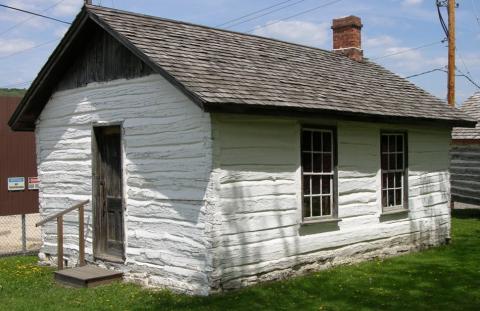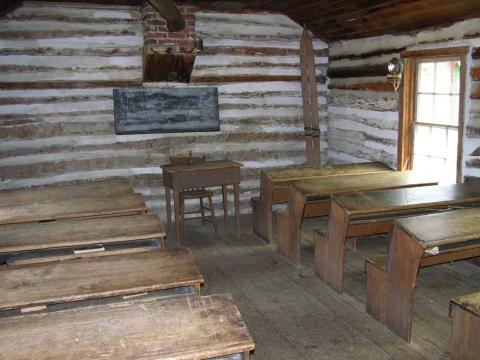In the 1860s, a handful of Norwegian immigrants to Iowa who were followers of the State Church in Norway, or the Norwegian Synod, tried to develop a system of parochial schools where they could teach all of the subjects, including religion and the Norwegian language, as a way of maintaining Norwegian identity. The idea, however, was not popular with the people in the Norwegian Synod's church congregations because they preferred to send their children to the "common schools" or public schools to learn English and American ways. This school building, the Rovang School, was one of three Norwegian parochial schools built to provide part-time religious education in the Norwegian language. The school was built in 1880 and served as a parochial school in rural Decorah for about four decades. Content can be used with the following standards: 1st grade SS 1.23 Cultural Makeup, 3rd grade SS 3.27 Immigration and Migration, 3rd grade SS 3.28 Cultural Contributions, SS-Geo. 9-12.24 Iowans Influence Iowa Environment and SS. Gov. 9-12.28 Iowas Issues and Policy. Lessons can be formed using the Norwegian artifacts in relations and revolve around Norwegian immigrants contributions to Iowa and experience with cultural assimilation in the school system. Photos of the school's exterior and interior as they appear today are attached. For any use other than instructional resources, please check with the organization that owns this item regarding copyright restrictions.
2018.008.005 [School]
Legal Status
Ownership of this resource is held by the Vesterheim Norwegian-American Museum and has been provided here for educational purposes only, specifically for use in the Iowa Museum Association's "Teaching Iowa History" project. It may not be downloaded, reproduced or distributed in any format without written permission from the Rights Holder. For information on U.S. and International copyright laws, consult an attorney.


